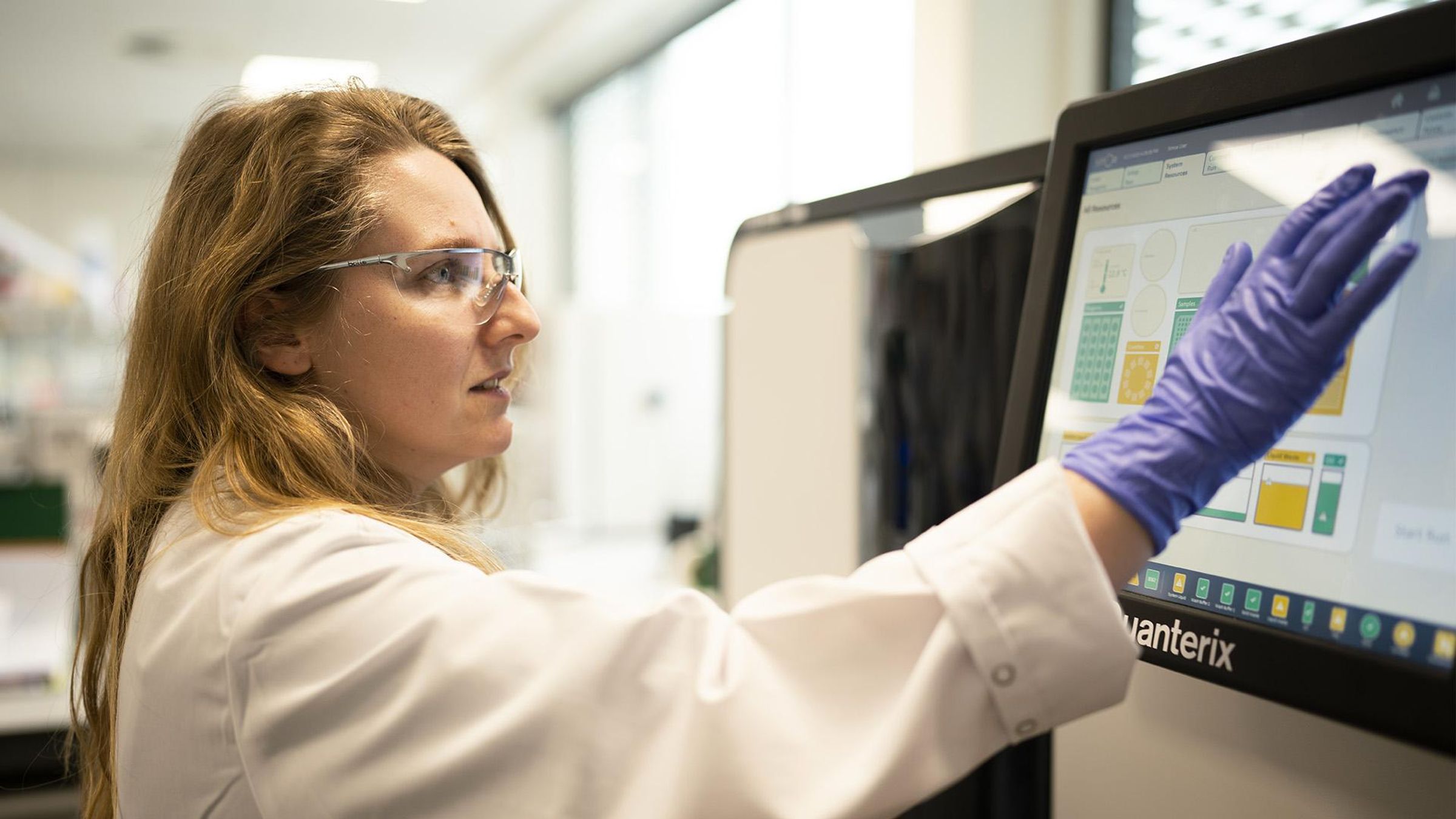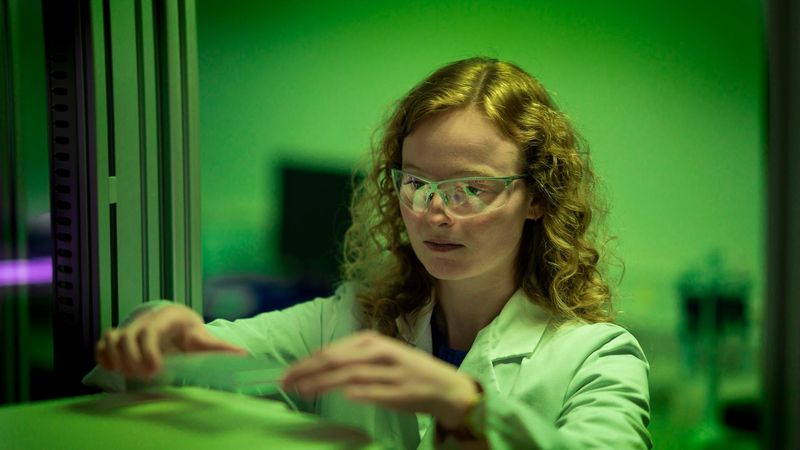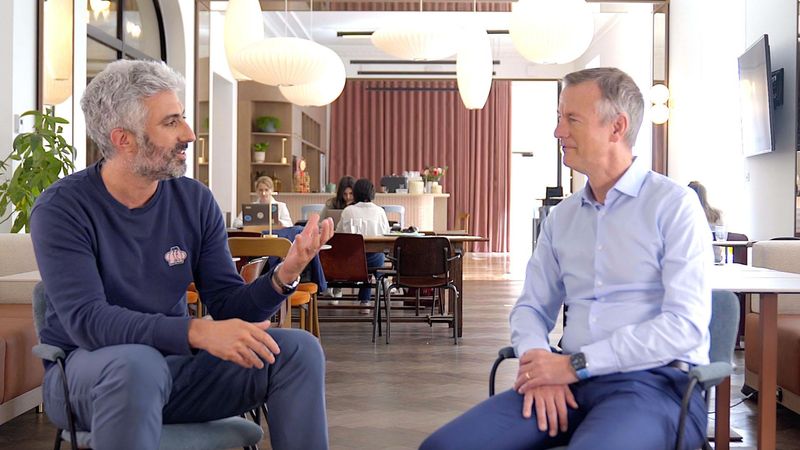Exploring Our Digital Transformation: Strategies and Innovations

Helen Merianos was working on a rare disease drug when she received a diagnosis of her own.
“Although it was horrible and scary, surviving cancer gave me a new perspective on my work,” said Helen, Sanofi’s Global Head of R&D Portfolio Strategy. Helen’s disease was caught early, and the next steps were clear, which can’t always be said for people living with rare disease.
“That’s why I do what I do. That’s why I’m dedicated to making sure we use every single dollar, every single resource in the most efficient way possible to make a difference for patients,” she said.
Helen is one of hundreds of colleagues driving the digital transformation at Sanofi. From disease biology and drug design to clinical trials and launch preparations, Sanofi teams are harnessing digital tools, such as artificial intelligence (AI), to step up R&D and bring innovative new medicines to patients faster than ever before.
“However fast we can deliver a new medicine for a patient, it is still too slow,” said Matt Truppo, Global Head of Research Platforms at Sanofi. “There is an ever-increasing need across the industry to bring new innovations to patients in a more rapid way, but also in a more resource-sparing way.”
Making Better Decisions
“One of the biggest ways AI can help us is by translating the masses of information and data we have into actual knowledge and understanding so we can make better decisions across the drug discovery process,” Matt said.
Through Sanofi’s AI Research Factory, various teams are already applying digital tools to better understand disease biology, streamline drug discovery and boost clinical translation. For instance, teams led by Emanuele de Rinaldis, Sanofi’s Global Head of Precision Medicine & Computational Biology, have built target identification engines that crunch many kinds of data in the context of specific biological pathways.
“Our proprietary Target Discovery engines, along with the wealth of genetic, genomic, functional and cellular disease data now at our disposal, put us in a unique position to unravel disease biology and discover new targets,” Emanuele said. “They combine advanced AI, machine learning and data integration with experimental techniques for target validation. So far, the engines have delivered seven novel drug targets in just one year.”
As for drug design, researchers are developing and using models to predict the structure and biophysical properties of potential drug candidate molecules: “We’re fine-tuning our models to work even in environments where data is very sparse,” Matt said. “That translates into getting some of the answers we need in silico, saving us time and resources because we don’t need to physically produce as many compounds in the lab.”
Uncovering Hidden Biases to Maximize Impact
In portfolio management, Helen is tapping AI to uncover hidden assumptions and help her teams think more creatively about medicines in development.
“In R&D, some of the assumptions we make are obvious, like the scientific hypotheses that we’re testing. But we also make a lot of assumptions about the future: what will the market look like? What is the unmet need and how will it evolve over time?” Helen said. “We are leveraging AI to provide an alternative perspective on some of those strategic drivers that influence portfolio investment decisions.”
With an AI-powered tool called PLai, Helen and her teams are leveraging more than 1 billion data points, including internal clinical-trial and commercial data, as well as external information like competitor news flow, to predict value drivers such as R&D costs, trial enrolment, and a program’s probability of success. These predictions, along with strategic recommendations, help senior leaders make the right decisions to maximize patient impact—including the hard choices, like stopping a project early to fund more promising programs.
Beyond Speed
“In drug development, our first instinct might be to go as fast as possible. But if we zoom out, many other possibilities can appear,” Helen said. “We can look at several what-if scenarios, and then find ourselves prioritizing specific activities to benefit the whole portfolio, rather than simply accelerating everything. Digitalization, AI and modeling are enabling us to have these kinds of conversations in a way that wasn’t possible before.”
Matt emphasizes the importance of widespread adoption of these digital technologies. To bring these capabilities to every level of Sanofi, it is critical to roll out “massive and rapid education,” he said.
“Transparency is key. In the case of AI tools, it isn’t always clear how they work—it can look like the machine is spitting something out of nowhere, which is very unsatisfying to a scientist,” he added. “We have rolled out various training courses explaining the fundamentals of AI to upskill our workforce. Additionally, we are working on things like explainable AI, which enables the machine to give insights into how the predictions are made. This allows colleagues to effectively partner with AI tools in their work.”
Explore more

Artificial Intelligence across Sanofi

Artificial Intelligence in R&D
